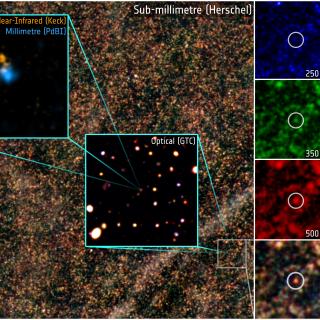Bibcode
Villarroel, Beatriz; Marcy, Geoffrey W.; Geier, Stefan; Streblyanska, Alina; Solano, Enrique; Andruk, Vitaly N.; Shultz, Matthew E.; Gupta, Alok C.; Mattsson, Lars
Bibliographical reference
Scientific Reports
Advertised on:
0
2021
Citations
14
Refereed citations
11
Description
Nine point sources appeared within half an hour on a region within ∼? 10 arcmin of a red-sensitive photographic plate taken in April 1950 as part of the historic Palomar Sky Survey. All nine sources are absent on both previous and later photographic images, and absent in modern surveys with CCD detectors which go several magnitudes deeper. We present deep CCD images with the 10.4-m Gran Telescopio Canarias, reaching brightness r ∼26 ? mag, that reveal possible optical counterparts, although these counterparts could equally well be just chance projections. The incidence of transients in the investigated photographic plate is far higher than expected from known detection rates of optical counterparts to e.g. flaring dwarf stars, Fast Radio Bursts, Gamma Ray Bursts or microlensing events. One possible explanation is that the plates have been subjected to an unknown type of contamination producing mainly point sources with of varying intensities along with some mechanism of concentration within a radius of ∼? 10 arcmin on the plate. If contamination as an explanation can be fully excluded, another possibility is fast (t <0.5 ? s) solar reflections from objects near geosynchronous orbits. An alternative route to confirm the latter scenario is by looking for images from the First Palomar Sky Survey where multiple transients follow a line.
Related projects

Formation and Evolution of Galaxies: Observations in Infrared and other Wavelengths
This IAC research group carries out several extragalactic projects in different spectral ranges, using space as well as ground-based telescopes, to study the cosmological evolution of galaxies and the origin of nuclear activity in active galaxies. The group is a member of the international consortium which built the SPIRE instrument for the
Ismael
Pérez Fournon

Milky Way and Nearby Galaxies
The general aim of the project is to research the structure, evolutionary history and formation of galaxies through the study of their resolved stellar populations, both from photometry and spectroscopy. The group research concentrates in the most nearby objects, namely the Local Group galaxies including the Milky Way and M33 under the hypothesis
Martín
López Corredoira